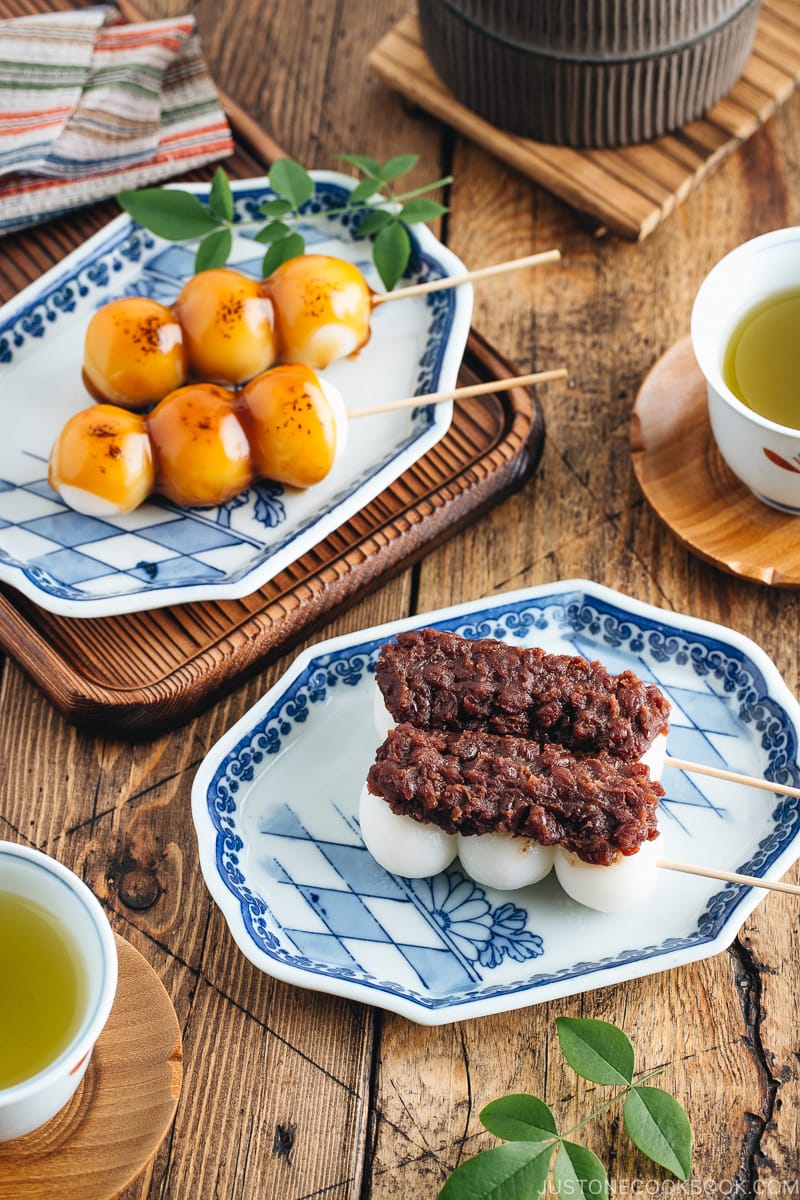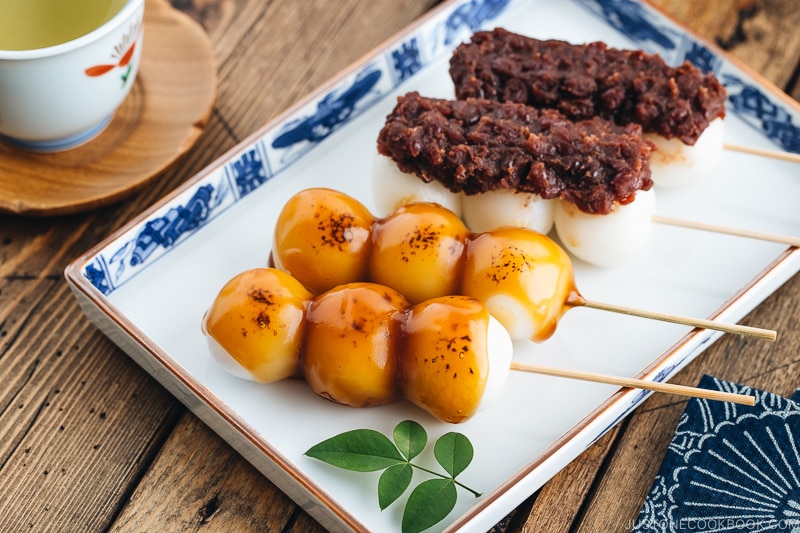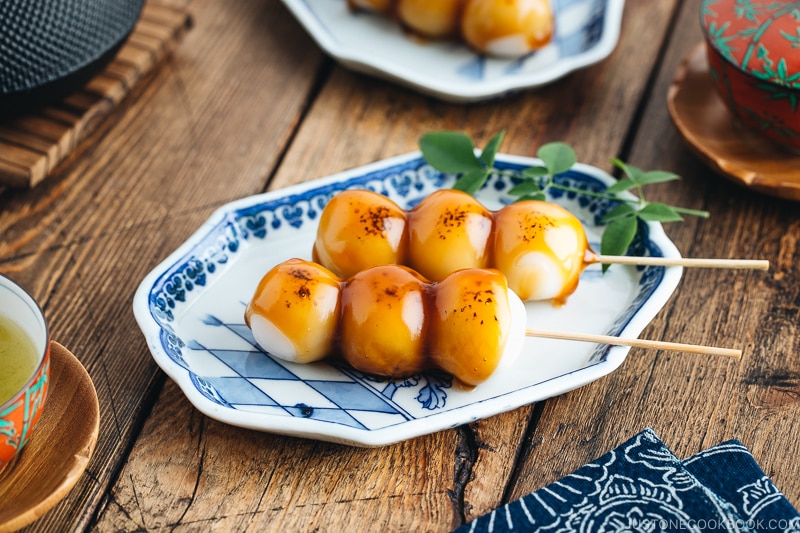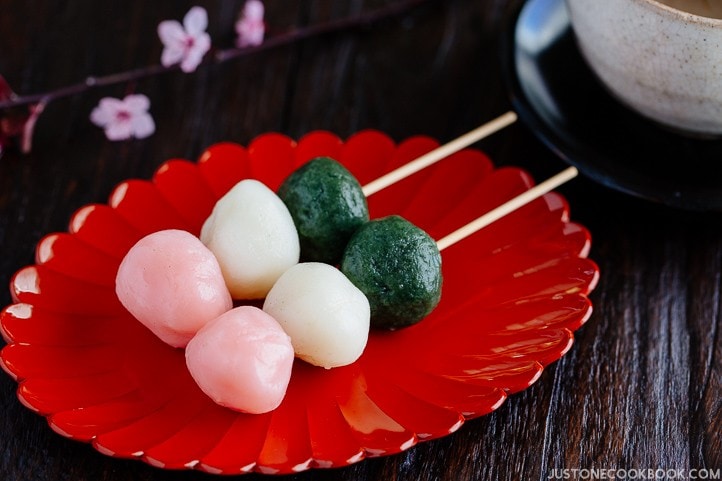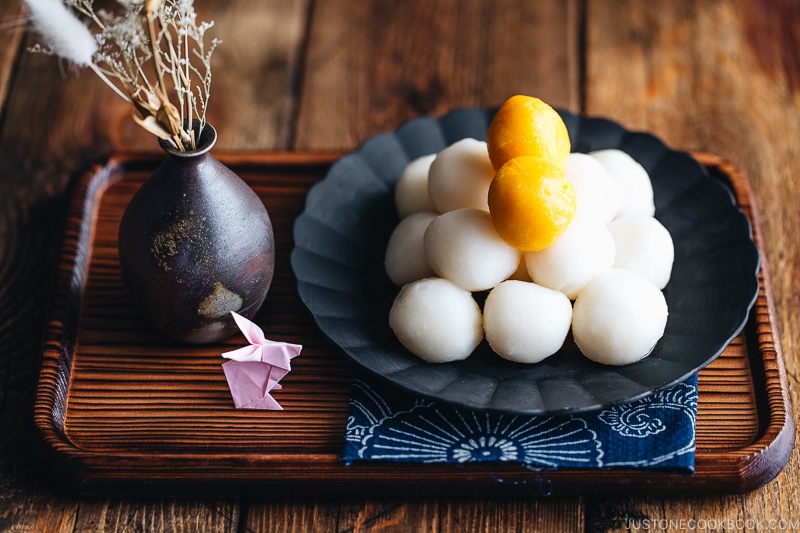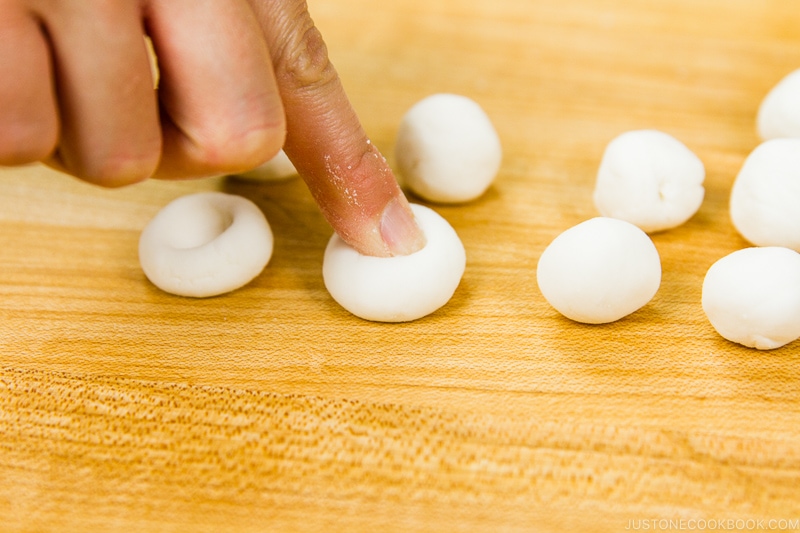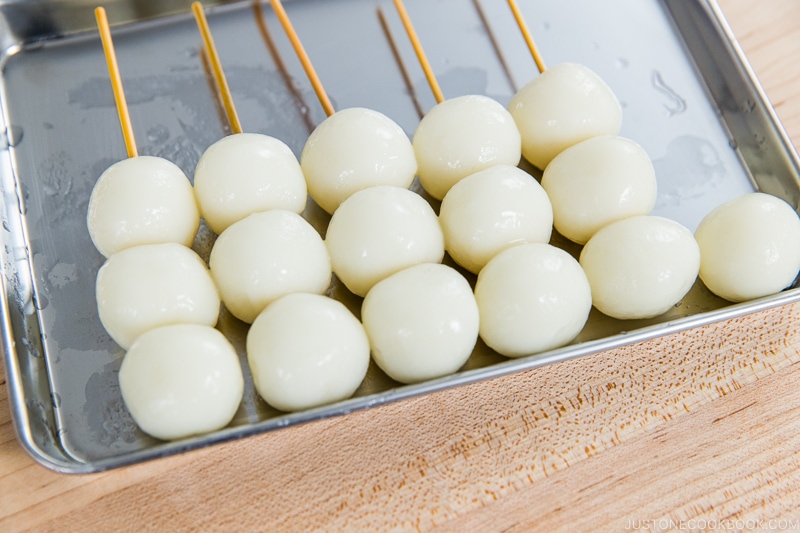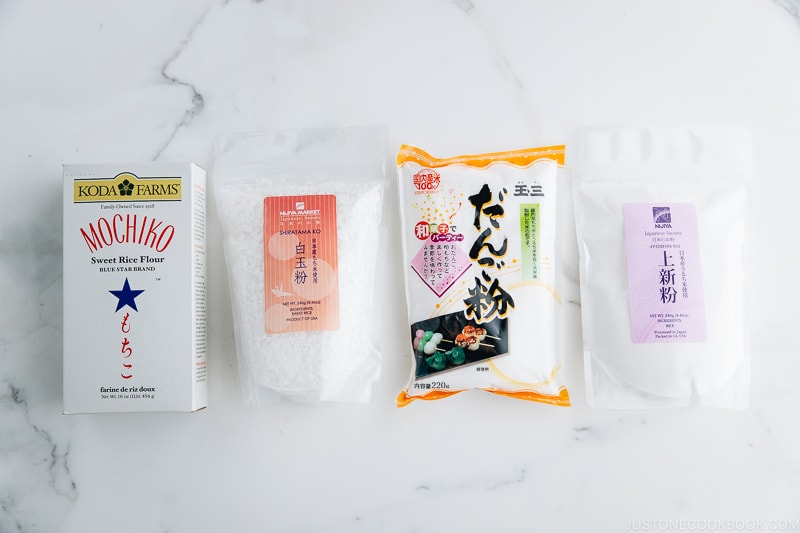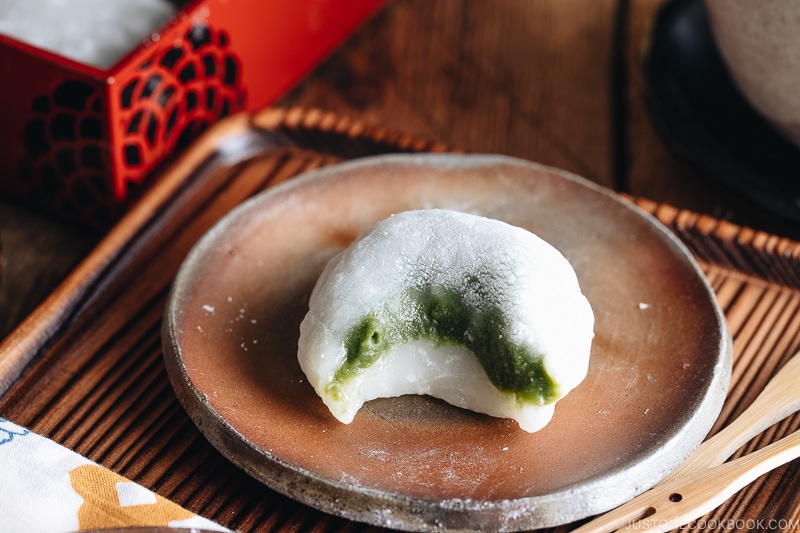While visiting Japan, you’ll want to try dango (団子, だんご) or sticky rice balls skewered on a bamboo stick. You can find these sweet rice dumplings at street stalls, local sweet shops, and festivals. Similar to mochi, dango are chewy and addicting! They’re just as popular as other types of sweet treats in Japan. Today, let’s get familiar with dango! I’ll also share some of my delicious dango recipes that you can make at home.
The Difference Between Dango and Mochi
You may be wondering what the difference is between dango and mochi. They are both made of glutinous rice, and you might think they are the same at first bite! Any Japanese person would tell you otherwise, though. Here are the differences (and one similarity):
1. How It’s Made
Dango is made from rice flour and while mochi is made from rice grains. For dango, we mix rice flour (often a mixture of rice flour and glutinous rice flour) with water to make a pliable dough, form it into balls, then boil them. To make mochi, we steam short-grain glutinous rice called mochigome, pound it until stretchy, and form it into different shapes.
2. Texture
Dango has a firmer and slightly springy texture so it can stay in a round ball shape. On the other hand, mochi is a lot more elastic and stretchy and can be a bit droopy and soft.
3. Presentation
The most common way of serving dango is on a skewer of 3 to 5 small, round dumplings. Mochi is usually formed into a bigger cake and stuffed with fillings or formed into a flat, round shape and coated with seasonings.
4. Flavor
Both dango and mochi are plain tasting with a mild rice flavor. That’s why they are usually coated or topped with nostalgic traditional flavors like sweet soy sauce glaze (mitarashi sauce, みたらし), sweet red bean paste (anko, あんこ), or nutty soybean powder (kinako, きな粉).
Popular Types of Dango
We have several kinds of dango in Japan, and if we include some regional specialties, the list can get quite long. Here, I will share my recipes for the most popular kinds of dango.
1. Mitarashi Dango
Mitarashi Dango (みたらし団子) is coated with a sweet soy sauce glaze that is thick and syrupy. This savory and sweet sauce is quite addicting and there are many fans looking for this dango at street stalls in Asakusa, traditional shopping streets, and the conbini (Japanese convenience stores). You can easily make this rice dumpling at home following my recipe.
2. Hanami Dango (Sanshoku Dango)
You’ve probably seen this 🍡 emoji. This is hanami dango (花見団子), sometimes called sanshoku dango (三色団子) with pink, white, and green dango. We enjoy this popular springtime snack during cherry blossom viewing (hanami) in Japan. You can make homemade Hanami Dango with my recipe.
3. Tsukimi Dango
In mid-autumn, the Japanese celebrate the harvest under the full moon and marvel at the passing of the seasons. On Tsukimi(月見) – Japanese Harvest Moon Festival or Mid-Autumn Festival (中秋の名月), we enjoy Tsukimi dango (月見団子) with tea. Tsukimi dango are served plain and stacked in a pyramid arrangement of 15 rice dumplings. Celebrate Mid-Autumn Festival by making Tsukimi Dango at home!
4. Shiratama Dango
Shiratama Dango (白玉団子) are soft and small with a little dimple. The flatter shape is perfect as a Japanese dessert topping and served with Oshiruko, Kakigori (shaved ice), and Anmitsu. Follow my Shiratama Dango recipe to make them at home.
5. Other Popular Varieties
yomogi dango (よもぎ団子) — also known as kusa dango (草団子); made with Japanese mugwort sasa dango (笹団子) — dumplings wrapped with bamboo leaves; a specialty from the Niigata prefecture Kibi dango (吉備団子) — made of glutinous rice, starch, and sugar; a specialty of Okayama prefecture
How to Make Basic Dango at Home
Making basic dango is easy, mess-free, and fail-proof! If you’re looking for a bonding activity with your kids, family, or friends, I’d recommend spending an afternoon making these delicious dumplings. It takes just 30–45 minutes. Read below for an overview on how to do it; find the full recipe in my Mitarashi Dango post.
1. Ingredients You’ll Need
either a mix of joshinko (上新粉) + shiratamako (白玉粉) or a rice flour blend called dangoko (団子粉) — read below for more explanation of the flours water
2. Five Easy Steps!
For the detailed step-by-step instructions, see my Mitarashi Dango recipe.
3. Pick Your Toppings
Sweet soy glaze — see my Mitarashi Dango recipe Sweet red bean paste (anko) — buy premade red bean paste or see my Anko recipe Sweet soybean flour (kinako) — buy soybean flour and mix with sugar Sweet matcha paste — see my Green Tea Filling (Matcha-an) recipe
Guidelines for Making Dango Dough
Get Familiar with Different Rice Flours
The textures of Japanese mochi sweets (mochi-gashi 餅菓子) like dango, Daifuku Mochi, Kashiwa Mochi, and Sakura Mochi are different from one another because of the type of rice flour used. Below are the short-grain rice flours and glutinous rice flours that we have in Japan. See them pictured above from left to right: With the popularity of mochi sweets overseas, I hope these ingredients will be widely available in the future so everyone can make different types of mochi at home. Wish to learn more about Japanese cooking? Sign up for our free newsletter to receive cooking tips & recipe updates! And stay in touch with me on Facebook, Pinterest, YouTube, and Instagram.
